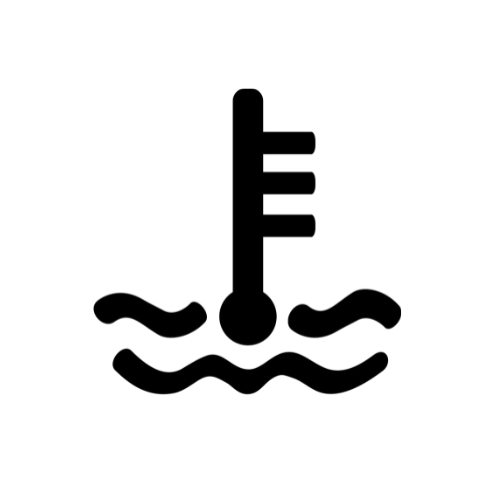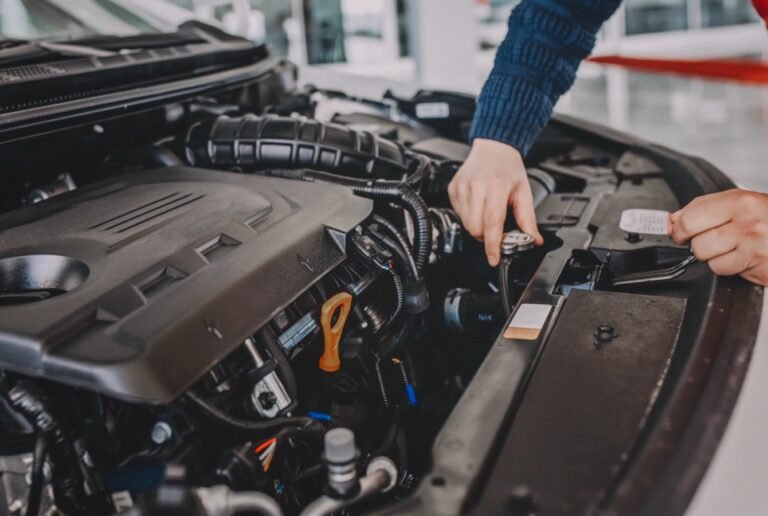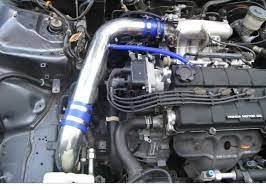What Color Coolant Does Hyundai Use? Car Care Secrets!
Hyundai uses blue coolant. This coolant is specifically formulated for Hyundai vehicles to ensure optimal performance and protection.
Hyundai vehicles come equipped with blue coolant, a specially designed fluid that plays a crucial role in maintaining the engine’s temperature and preventing overheating. The blue coolant used by Hyundai contains additives that help prolong the life of the engine and its components.
By using the recommended coolant, Hyundai owners can ensure that their vehicles continue to run smoothly and efficiently. Understanding the type of coolant your Hyundai requires is essential for proper maintenance and longevity of the vehicle. Let’s delve deeper into the significance of using the correct coolant for Hyundai vehicles and its impact on overall performance.
Introduction To Hyundai Coolant

Hyundai vehicles typically use blue coolant, which is a long-lasting and eco-friendly option. The blue color helps in easy identification and is compatible with Hyundai’s cooling system. Regular coolant checks are essential for optimal engine performance.
The Role Of Coolant In Your Hyundai
Hyundai’s Recommended Coolant Colors
The Spectrum Of Coolant Color
Hyundai primarily uses blue coolant in their vehicles, which is a distinctive color choice. The blue coolant not only enhances the aesthetic appeal under the hood but also offers effective temperature regulation for the engine. Other coolant colors like green and red are also compatible with Hyundai vehicles, providing versatility for drivers.
Color Coding And Its Significance
Hyundai vehicles, like most cars, use coolant to regulate engine temperature and prevent overheating. Coolant comes in different colors, which can be confusing for car owners who are not familiar with the color coding system. Understanding the significance of coolant colors is crucial to ensuring your car is well-maintained and running smoothly.
Common Coolant Colors And Their Meanings
The most common coolant colors are green, yellow, red, blue, and pink. Each color represents a specific type of coolant and has its own meaning. Green and yellow coolants are typically made of ethylene glycol and are the most common types of coolant used in vehicles. Green coolant is often referred to as “traditional” coolant and is used in older cars. Yellow coolant is often referred to as “extended-life” coolant and is used in newer cars.
Red, blue, and pink coolants are typically made of a different type of coolant called propylene glycol. These coolants are often referred to as “long-life” or “extended-life” coolants. Red coolant is used in some European cars, while blue coolant is used in some Asian cars. Pink coolant is used in some American cars.
The Bottom Line
Knowing what color coolant your Hyundai uses is important for maintaining your vehicle. If you are unsure what type of coolant your car uses, consult your owner’s manual or contact your local Hyundai dealer. It is also important to note that different types of coolant should not be mixed, as this can cause damage to your engine. Stick to the recommended coolant for your car and you’ll be well on your way to keeping your Hyundai running smoothly.
Hyundai’s Coolant Color Choices
Hyundai is one of the most popular car brands in the world, known for producing reliable and high-performance vehicles. However, when it comes to maintaining your Hyundai, it’s important to know the basics of your car’s coolant system. One of the most common questions that Hyundai owners have is about the color of their car’s coolant. In this article, we’ll take a closer look at Hyundai’s coolant color choices to help you understand what type of coolant you should be using for your vehicle.
Original Coolant Color For Hyundai Models
The original coolant color for most Hyundai models is green. This color is commonly used in traditional coolant formulations, which use ethylene glycol as the main ingredient. This type of coolant is designed to last for up to five years or 150,000 miles, depending on the specific formulation. If you have a newer model Hyundai, it’s possible that your car came with a different color coolant, such as blue or yellow.
Aftermarket Coolant Options
While using the original Hyundai coolant is always a safe choice, there are also many aftermarket coolant options available that can work just as well. One popular option is a long-life coolant, which is typically red or orange in color and can last for up to 150,000 miles or more. Another option is a hybrid organic acid technology (HOAT) coolant, which is yellow in color and is designed to last for up to five years or 100,000 miles. It’s important to note that not all aftermarket coolant options are suitable for Hyundai vehicles, so be sure to check the product specifications before making a purchase.
Understanding the color of your car’s coolant can help you maintain your vehicle’s performance and prevent costly repairs down the road. While the original coolant color for most Hyundai models is green, it’s important to check your owner’s manual or consult with a professional mechanic to determine the right type of coolant for your specific vehicle. Whether you choose to use the original Hyundai coolant or an aftermarket option, regular coolant maintenance is essential to keeping your car running smoothly for years to come.
Understanding Coolant Color Impact
Coolant, also known as antifreeze, is a crucial component of your Hyundai’s cooling system. It helps regulate the engine’s temperature and prevents it from overheating. One common question that car owners often have is, “What color coolant does Hyundai use?”
The coolant color can vary depending on the make and model of your Hyundai vehicle, but it is typically either green, yellow, or red. Understanding the coolant color impact can provide valuable insights into your vehicle’s performance and maintenance requirements.
Performance Implications

The color of your Hyundai’s coolant can give you an indication of its performance implications. Different coolant colors often indicate the type of additives and technologies used in the coolant formulation. Let’s take a closer look at what each coolant color may signify:
- Green Coolant: Green coolant is commonly associated with traditional coolant formulations containing silicate-based additives. It is widely used in older Hyundai models. While green coolant provides decent corrosion protection, it may have a shorter lifespan compared to newer coolant formulations.
- Yellow Coolant: Yellow coolant, also known as Extended Life Coolant (ELC), typically contains organic acid technology (OAT) additives. This type of coolant is often used in newer Hyundai vehicles. Yellow coolant offers improved corrosion protection and an extended service life, usually up to 5 years or 150,000 miles.
- Red Coolant: Red coolant, also referred to as Hybrid Organic Acid Technology (HOAT) coolant, combines the benefits of traditional and extended-life coolants. It contains a mixture of silicate and organic acid additives, providing excellent corrosion protection and an extended service life.
Maintenance And Longevity
The coolant color can also impact the maintenance and longevity of your Hyundai’s cooling system. Here’s what you need to know:
- Green Coolant: If your Hyundai is using green coolant, it is crucial to follow the manufacturer’s recommended maintenance schedule. Green coolant typically requires more frequent replacement, usually every 2 years or 30,000 miles.
- Yellow Coolant: Yellow coolant generally offers a longer service life compared to green coolant. However, it is still essential to adhere to the manufacturer’s recommended maintenance schedule to ensure optimal performance and longevity.
- Red Coolant: Red coolant, like yellow coolant, usually has an extended service life. Following the manufacturer’s maintenance recommendations is essential to maximize its effectiveness and protect your Hyundai’s cooling system.
Regular coolant inspections and replacements are crucial for maintaining the health of your Hyundai’s cooling system. It is recommended to consult your vehicle’s owner manual or seek professional advice to determine the specific coolant requirements for your Hyundai model.
Changing Your Hyundai’s Coolant
Hyundai vehicles typically use a blue-colored coolant, which is a long-life type that lasts up to 10 years or 100,000 miles. When changing your Hyundai’s coolant, it’s crucial to use the recommended coolant type to ensure proper engine performance and longevity.
Regular coolant checks and replacements are essential for maintaining your Hyundai’s cooling system.
Changing the coolant in your Hyundai is an important maintenance task that should not be overlooked. Over time, coolant can become contaminated with debris and lose its effectiveness in regulating the temperature of your engine. In this section, we will discuss the signs that indicate your coolant needs changing, as well as the options of a DIY coolant change versus seeking professional assistance.
Signs Your Coolant Needs Changing
It’s crucial to be aware of the signs that indicate your Hyundai’s coolant needs changing. Ignoring these signs can lead to engine overheating and potential damage. Look out for the following indicators that it’s time to change your coolant:
- Visible coolant leaks or puddles under your vehicle
- Engine temperature gauge consistently running higher than normal
- Steam or smoke coming from the engine compartment
- Low coolant levels in the reservoir
- Discolored or rusty coolant
If you notice any of these signs, it’s important to take action promptly to prevent any further complications.
Diy Vs Professional Coolant Change
When it comes to changing your Hyundai’s coolant, you have two options: a DIY coolant change or seeking professional assistance. Let’s explore the pros and cons of each:
DIY Coolant Change
A DIY coolant change can be a cost-effective option for those with some automotive knowledge and experience. Here are a few steps to guide you through the process:
- Gather the necessary tools and materials, including a coolant drain pan, fresh coolant, and a funnel.
- Make sure your engine is cool before starting.
- Locate the coolant drain plug or valve on your radiator and place the drain pan underneath.
- Open the drain plug/valve and allow the old coolant to drain completely.
- Once drained, close the drain plug/valve and dispose of the old coolant properly.
- Using the funnel, carefully pour the new coolant into the radiator until it reaches the recommended level.
- Start your engine and let it run for a few minutes to circulate the new coolant. Check for any leaks.
While a DIY coolant change can save you money, it’s essential to follow the manufacturer’s guidelines and use the correct coolant for your Hyundai model.
Professional Coolant Change
If you are unsure about performing a coolant change yourself or prefer to leave it to the experts, seeking professional assistance is the way to go. Here are the advantages of a professional coolant change:
- Trained technicians who have experience working specifically with Hyundai vehicles.
- Access to specialized equipment and tools.
- Thorough inspection of other components related to the cooling system.
- Peace of mind knowing the job is done correctly.
While a professional coolant change may come at a higher cost, it ensures that the task is carried out efficiently and accurately.
In conclusion, changing your Hyundai’s coolant is a vital maintenance task that should not be overlooked. By being aware of the signs that indicate the need for a coolant change and considering the options of a DIY or professional approach, you can ensure the optimal performance and longevity of your Hyundai’s engine.
Coolant Maintenance Tips
When it comes to maintaining your Hyundai’s cooling system, proper coolant maintenance is crucial for the vehicle’s performance and longevity. Here are some essential coolant maintenance tips to help you keep your Hyundai running smoothly.
Regular Check-ups
Regularly checking the coolant level and quality is vital to ensure that your Hyundai’s engine remains cool and operates efficiently. Inspecting the coolant level at least once a month can help you identify any potential issues and prevent overheating.
Preventing Contamination And Corrosion
Preventing contamination and corrosion in your Hyundai’s cooling system is essential for its overall health. Using the correct coolant color recommended by Hyundai is crucial to prevent corrosion and maintain the system’s integrity. Regularly flushing and replacing the coolant according to the manufacturer’s recommendations can help prevent contamination and ensure optimal performance.
Troubleshooting Coolant Issues
Identifying Common Problems
If your Hyundai is experiencing coolant problems, watch out for these signs:
- Leaking coolant under the vehicle
- Engine overheating regularly
- Low coolant levels without a visible leak
When To Seek Professional Help
If you notice any of the above issues, it’s time to consult a professional mechanic.
Future Of Hyundai Coolants
As Hyundai continues to innovate, the future of their coolants looks promising. Let’s explore the latest developments in Hyundai coolant technology and their commitment to eco-friendly solutions.
Innovations In Coolant Technology
Hyundai is at the forefront of innovations in coolant technology, constantly improving coolant efficiency and engine performance.
Eco-friendly Coolant Solutions
Hyundai prioritizes environmental sustainability by introducing eco-friendly coolants that are biodegradable and non-toxic.
Conclusion
Knowing the correct coolant color for your Hyundai is crucial for maintaining optimal engine performance and longevity. By using the recommended coolant color, you can prevent corrosion and ensure efficient heat transfer within the engine. Always refer to your owner’s manual for the specific coolant type and color required for your Hyundai vehicle.

At CoolantInCar, we are dedicated to demystifying the world of engine coolant and cooling systems.



